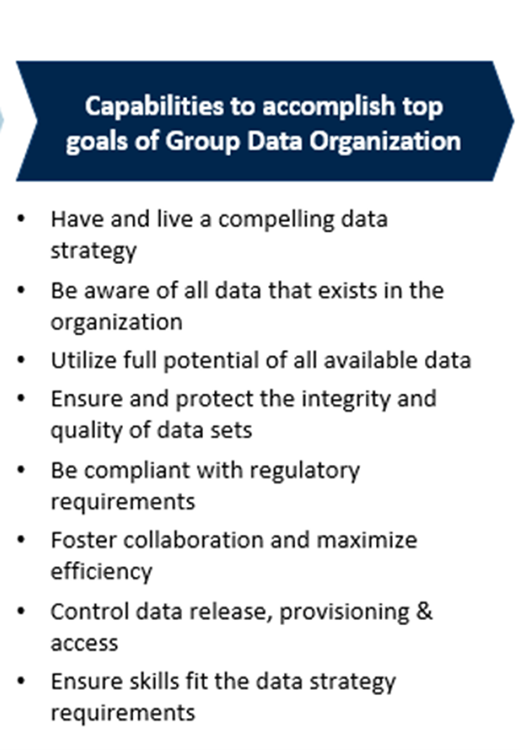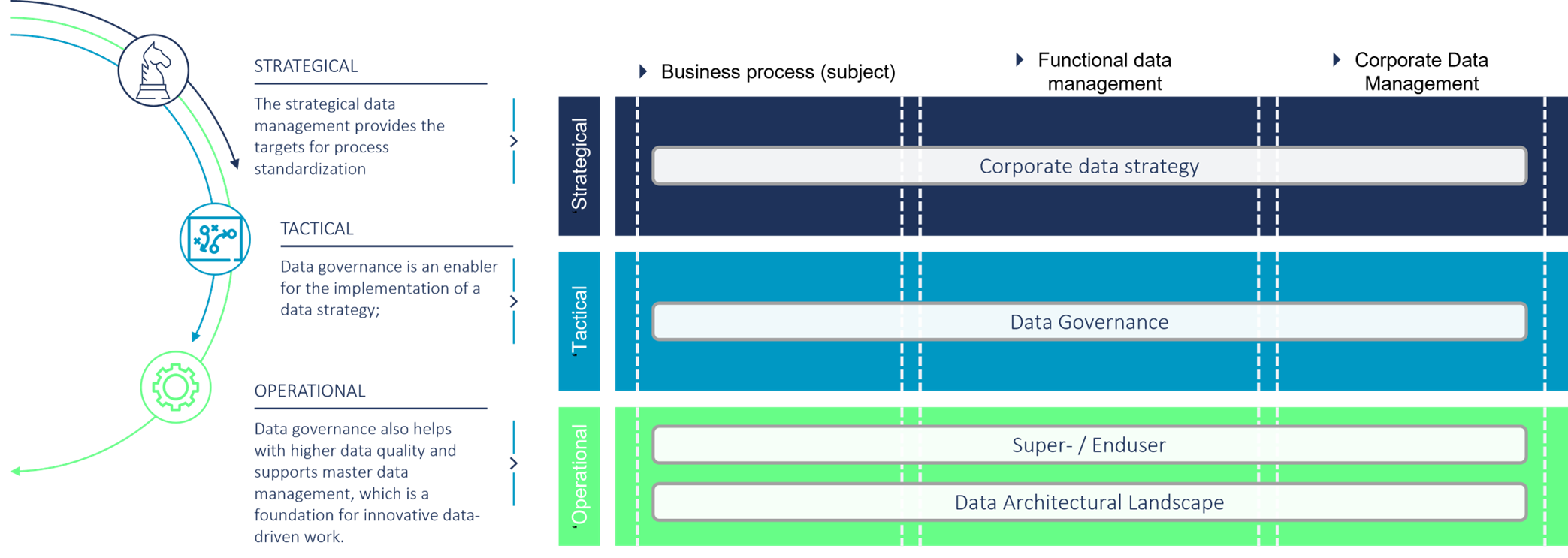To make the investments in the direction of a data-driven company worthwhile, many CIOs and data managers are currently faced with the task of demonstrating the value contribution of data projects. The strategic task is to reduce the time-to-value for data projects. The following applies here: The path to get there is individual and needs a strong vision that sets the direction for every decision.
Reduce Time-to-Value: Making Data Usable Quickly
In the transformation to a data-driven organization, there is a real time paradox in many companies: It takes time to implement software solutions individually, i.e., aligned with the company’s goals. But time, in particular, is in short supply in the race for new business models. The cloud and SaaS paradigm is expected to provide a solution to this paradox. The goal is to minimize the time-to-value as the time until the value of the investment is generated.
This time-to-value optimization is achieved by setting up comprehensive data governance and developing an organization in the direction of data centricity.
Data Centricity
Data centricity is a proven concept to minimize the time to value architecturally: It describes access to seamlessly integrated consolidated data hubs as central data providers.

As the figure shows, there are many other connotations behind data centricity—the buzzword has a lot of “baggage,” so to speak, and also includes these concepts, for example:
- data distribution and access, for example, with concepts of data federation and DATA MESH,
- data democracy with the aspect of being able to access data,
- and employee enablement aimed at data literacy, which is accompanied by CHANGE MANAGEMENT and checked for effectiveness.
Improvements in these dimensions have a direct positive impact on the time-to-value of data projects.
Data Strategy: Bringing the Vision for the Company to Life
The data strategy is the first important step for operationalizing the corporate strategy in the direction of data-driven. It lays down the guideline and sets the guard rails in dealing with data and paves the way by providing binding instructions for action to carry out the necessary steps towards a data-driven organization. However, a data strategy does not carry out any operational and technical implementations—this objective is, for example, the task of data management for which the data strategy is ultimately the client.
The following applies here: Without recourse to the company’s overall strategy, the data strategy has no goal. And without accompanying changes at the organizational level, the data strategy will hardly get beyond the virtual paper on which it is written.
Implementing a data strategy requires a high level of motivation as well as a lot of initiative and staying power. With the current maturity of many organizations, topics such as data culture, data sponsorship, and data governance often need to be driven forward first; they pay into the implementation of the data strategy. At the strategic level, exactly the right methods and tools must be identified and implemented to support the organization most effectively. The necessary capabilities for the data organization are derived from the company’s vision, because only with them is the implementation of the data strategy possible. At the same time, there are requirements that must be met: for example, that the integrity and quality of data records remain guaranteed, legal requirements are met, or all data available in the company can be used. With better data quality, processes can be optimized, which translates into overall time savings. In the medium term, this optimizes time-to-value.
Process Standardization: Data Governance as an Enabler for Data-Driven
To shorten the time-to-value for data strategy implementation measures, implementation projects should not focus purely on business process configuration or data management. To understand the potential benefits of data, it is more beneficial to address the overarching goal of increasing data value: the alignment of data governance processes.
Data governance is an enabler for the implementation of a data strategy, as it opens up the field of tension between the robustness and flexibility of the architecture. And it is on this playing field that many transformational issues reside, such as growing data diversity, hurdles to holistic data access, the number of digital transactions, and hard-to-move organizational and corporate structures.
Data governance also helps with higher data quality and supports master data management, which is a foundation for innovative data-driven work. The fact that there is still a need to catch up here is shown by the projects with which many companies are currently improving their master data and data quality management.

Communicate Vision: Employee Enablement
An important supporter — if not an essential prerequisite for data governance — is a “data-driven culture.” Once in place, this drives data governance at the process level and makes compliance with governance guidelines more likely.
The predominant challenge in data governance alignment is a culture change in terms of the strategic and structural alignment of the company’s ecosystem. This can be implemented, for example, by restructuring existing processes — in other words, by incorporating cross-company process standardization that takes the new strategy into account. Such an endeavor is only successful if new processes find enough supporters.
to shorten the time-to-value, namely the so-called “community building.” This is about executives initially gaining advocates for the project and inspiring employees with a target scenario. This makes employees more open to upcoming changes and enablement. Both are important prerequisites for a successful transformation that will have a massive impact on employees’ day-to-day work — specifically on the tasks and processes they perform as well as the way they work and the skills they need. How effectively companies lead their employees through this change will sometimes be the biggest factor in achieving sustainable, successful results.
CIO: Transformation Driver, Enabler, and Value Creator
The transformation to a data-driven organization is one of the top-management projects in many companies. The CIO or IT manager has a particularly important strategic role to play here, as they provide the operational foundations in technology and infrastructure. They often also have the role of initiating important process restructuring or building up new capabilities within the company. Not infrequently, they also act as a “translator” and enabler for management colleagues with the aim of placing individual measures in the larger context of the corporate strategy.
To keep the attention high and maintain the “buy-in” of their management colleagues, many CIOs are currently faced with the task of proving the added value of data initiatives and reducing time-to-value. This further enhances this role and, in the best case, even aligns initiatives to this overarching goal: which measures lead most quickly to data generating value. One operationalization of this value contribution through data is data marketplaces.
